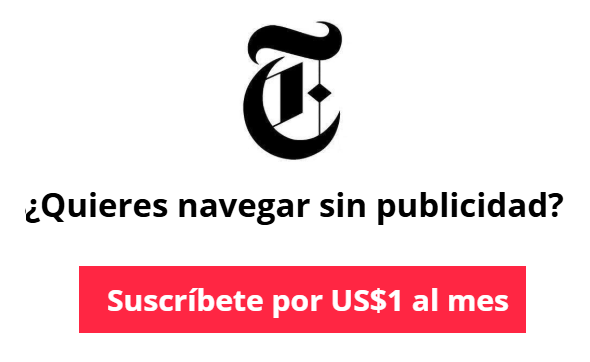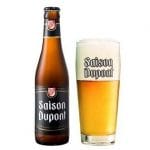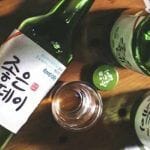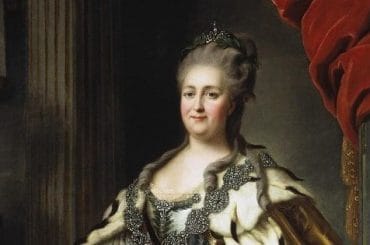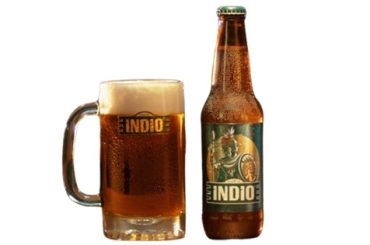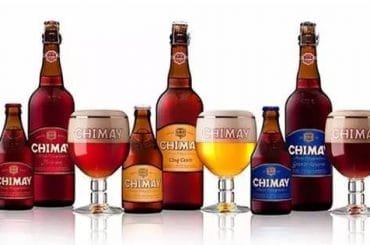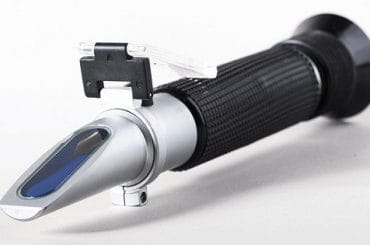This post is also available in:
Español
Português
The history of Corona Extra dates back to March 8, 1922, when a group of Spanish immigrants decided to begin the construction of Cervecería Modelo S.A.

Once the construction of the brewery was completed in 1925, the youngest beer group in Mexico, Grupo Modelo, was simultaneously born, led by Braulio Iriarte as president and Francisco Cilveti. Their initial objectives were to position the brewery in Mexico City and its surrounding areas.
The Hispanic community, internally grouped according to their towns and regions of origin, had earned a place in the social and economic life of Mexico. As such, Cervecería Modelo was an active part of that world of commercial associations and family connections that had been forged since the last third of the 19th century.
Contenido
The Birth of Corona Extra
In 1926, the first brand produced at the new brewery was Modelo. A month later, Corona Extra was born.
Legend has it that the distinctive logo of Corona Extra, from which it may have also taken its name, was inspired by the crown that adorns the Cathedral of Our Lady of Guadalupe in Puerto Vallarta. However, the tower was only erected in 1952, and the logo was incorporated in 1963.
For beer production, Modelo used Bohemian and Saaz hops, while the malts were imported from Germany and the United States.
It is said that the ingredients of the current Corona Extra include malted barley, rice and/or corn, hops, yeast, ascorbic acid as an antioxidant, and propylene glycol alginate as a stabilizer.
Who Was Pablo Diez Fernández?
Around this time, an important figure in the history of Grupo Modelo, Pablo Diez Fernández, born in León, Spain, emerged as the first vocal member of the Board of Directors of Cervecería Modelo, although he had already appeared in the brewery’s accounting records since its inception in 1922.
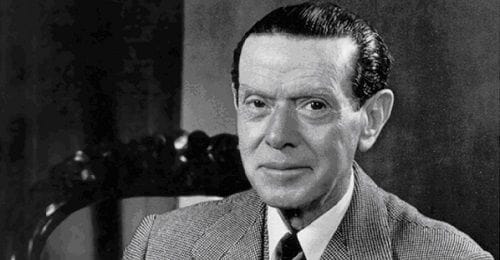
Pablo Diez Fernández began his career in the most modest positions, starting from a small estate. He worked as an accounting assistant and established his first commercial partnership with the owner of the bakery “La Primavera,” which he later owned.
In 1926, the factory began producing Corona Extra in its “quart” bottle presentation. At that time, there was a consideration to replace the now-traditional clear bottle with a brown one to better preserve its aromas and flavors. However, the public’s response to the proposed change was not positive, and the decision was made to maintain the clear bottle, prioritizing marketing considerations.
In 1930, Pablo Diez Fernández became the General Director of Cervecería Modelo, overseeing the expansions inaugurated in March 1931, which made the brewery the most modern and highest-capacity brewery in Mexico.
During the difficult period from 1931 to 1933, when the beer industry suffered the effects of the economic recession and the fiscal policies implemented, Cervecería Modelo underwent restructuring in its leadership, forcing the succession of its first president, Braulio Iriarte.
After Braulio Iriarte’s death in 1932, his heirs, including his eldest son Fernando, sold their shares in the brewery to Pablo Diez and Martín Oyamburu, a businessman in the dairy industry.
Avoiding the Bankruptcy of Cervecería Modelo
It was then Pablo Diez Fernández’s moment to demonstrate his skills as a negotiator and administrator, which allowed Cervecería Modelo to avoid impending bankruptcy.
Diez and Oyamburu shared the administration, making Corona Extra, ten years after its launch, the best-selling beer in Mexico.
A couple of years later, by mutual agreement, Diez and Oyamburu set a deadline to notarize the capacity and availability of resources for one of them to acquire the other’s shares. The first to do so would become the sole owner.
Despite Oyamburu’s economic superiority, Pablo Diez acted quickly and secured a loan from the National Bank of Mexico, legalizing the purchase proposal and becoming the sole owner of Cervecería Modelo as the majority shareholder from 1936 and leading the business until his death 36 years later.
Corona Extra
By 1937, Grupo Modelo’s strategy for Corona Extra was based on positioning its quality as a refined and sociable product and brand, unlike its main rival, pulque, a fermented pre-Hispanic beverage made from the maguey plant.
By 1940, Corona Extra decided to innovate and became the first beer to print its name directly on the bottle instead of using paper labels, as was traditionally done in the market.
It was also at this time that, taking advantage of the new packaging, Corona Extra rebranded itself as Corona Extra.
Corona Extra Marketing Strategies
In terms of image, nothing was as profitable for Cervecería Modelo and Corona Extra as radio and later television advertising related to sports such as soccer, baseball, boxing, and wrestling.
This Corona Extra marketing strategy began in the 1930s, and one of its greatest successes was the radio soap opera titled “¡Ahí viene Martín Corona!” starring Mexican singer and actor Pedro Infante.

Its success was such that it led to open theater performances and, finally, its cinematic adaptation in 1951, again starring Pedro Infante and now Sara Montiel in the leading roles.
Between 1953 and 1954, Modelo’s advertisers launched a campaign that sought to gather the best cartoonists of the time to draw characters from the artistic world, journalists, athletes, writers, popular figures, and even themselves, saying: “Just a moment… I’m having my Corona.”
In 1955, direct sponsorship of sports teams began, allowing for significant development in the distribution of Corona Extra, as well as its connection with the most important events of this type.
During the 1960s, Corona Extra family-size beer was launched, promoted as “the beer for your home,” and shortly after, Corona Extra draft beer was born as a result of the new technology implemented by the brewery.
International Expansion
Between the 1970s and 1980s, the brand expanded into international markets, starting with the United States and targeting regions with the highest number of Mexican immigrants, such as Arizona, California, New Mexico, and Texas.
To reach the rest of the United States, the brand faced a tough and lengthy legal process, as a brewery with the same name existed in Puerto Rico, and the rights were only obtained in 1979.

From 1980, Corona Extra decided to leverage the momentum gained in the U.S. market to reach other regions such as South America and Europe. Paradoxically, in Spain, the country of origin of its founders, things became complicated again, as the word “Corona” was registered for use in alcoholic beverages by the Catalan wine group Torres, who already marketed a wine named Corona. As a result, they had to adopt the name Coronita Extra.
It was not until 2014 that the Catalan winery agreed to sign a deal allowing Grupo Modelo to use the Corona Extra brand in the beer category, while the winery retained the rights for the wine category. The agreement was finalized in mid-2016.
In 1985, Grupo Modelo acquired all rights to the name “Corona” to be used as a brand and expand exports to the United States.
A year later, sales of Corona Extra in the United States were so high that in cities like New York and Denver, a black market for the product emerged, with sales at speculative prices.
Growth and Consolidation
In 1989, Corona entered the light beer market in the United States with the launch of its new product, Corona Light.
In the 1990s, the growth in production of Grupo Modelo’s beers exceeded 75 percent, going from 19.62 million hectoliters produced in the first year of the decade to 34.46 million in the last, making Corona Extra the best-selling Mexican beer in the world by 1997, surpassing its main international competitor, Heineken.

In 2002, the Group held a 62.7 percent share of total industry sales, and 81 out of every 100 Mexican beers exported that year came from its plants.
From the 250 people who initially formed the factory when it was founded, Cervecería Modelo now employs more than 44,000 people, 20,000 of whom work in operations and services, and 24,036 in distribution and sales.
In 2012, the Belgian-Brazilian company AB-InBev acquired 49% of Grupo Modelo’s shares.
The Lime Wedge
Although there are several theories, there is no substantial documentation or evidence to support the origin of the use of a lime wedge on the rim of the bottle.
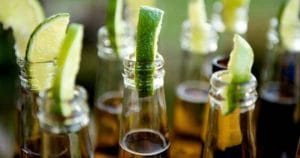
The most common theory suggests that the custom of drinking Corona Extra with a lime wedge originated in a bar in Baja California called “Cantina Hussong,” where a bartender bet another that he could create a new trend.
Another theory refers to the old metal caps leaving rust residue on the bottle, so the beer was served with a lime wedge to clean it.
Lastly, another theory mentions that this custom originated on the northern coasts of Mexico, where surfers used to add lime to their beers. When Corona arrived, it became easier to add a lime wedge than squeezing juice into the bottle. Later, American surfers traveling to Mexico would have brought the custom back home.
We recommend
- Siebel Institute Presents its Sensory Kit for Sour Beers
- The Importance of Women in the History of Beer

